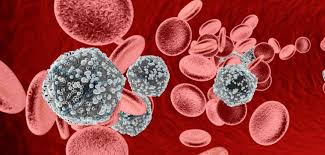Reactogenicity: How Vaccines Affect Our Bodies

The COVID-19 pandemic has changed the world forever. It goes without saying that every nation experienced tremendous effects of the virus. In order to ameliorate these negative impacts, scientists in America began Operation Warp Speed which aimed to develop a vaccine in a timely manner. This would allow Americans to guard themselves against the virus and eventually return to normal activities once enough immunity was achieved. However, now that the vaccine is available for administration, many Americans refuse to receive it or only receive one of the two recommended doses. While many perspectives exist on the vaccine and its efficacy, there are factual sources being overlooked as people develop their opinions on the vaccine. As someone who trusts and respects science, I value the precision of knowing exactly what occurs biologically when the vaccine is administered. In order to better understand the vaccine, I researched how the vaccine actually affects the body and how it can cause side uncomfortable side effects. In this paper, I hope to amend some concerns about the vaccine by providing scientifically-based information.
First, we must address what the vaccine is composed of. For the purposes of this paper, I will only focus on the Pfizer and Moderna vaccines since they are both mRNA vaccines. Meredith Wadman from the Science Mag explains, “Both vaccines [Pfizer and Moderna] consist of a snippet of genetic code directing the production of the coronavirus’ spike protein, delivered in a tiny fat bubble called a lipid nanoparticle.” Essentially, the vaccine is composed of mRNA, a genetic sequence, that allows our bodies to produce antibodies for the COVID virus. After the mRNA is translated into the harmless spike protein, or antigen, of the virus, our body learns how to defend against the protein. In a way, the vaccine teaches our body how to react to a real COVID particle by presenting it a dummy particle so to speak. After the mRNA is translated, it degrades naturally in the body and is harmless to the host.
Although the contents of the vaccine itself are not harmful, the effects of the vaccination can cause discomfort. All vaccines have something called reactogenicity, which is simply stated as the expected bodily reactions to a vaccine such as fatigue, aches, or soreness in the injection site. These results are expected because they are indications that the vaccine is at work.
Biologically, when a vaccine is injected into the body, local cells react to the potentially harmful substance by producing cytokines to send signals to humoral immune cells. These cells travel through the circulatory system to the infection site where inflammation is triggered by cytokines, histamine, or prostaglandins. Inflammation causes redness, swelling, and pain, and it is the body’s way of isolating an infected area and signaling other immune system cells to amend infection. Additionally, the COVID vaccine, among most vaccines, seems to elicit headaches, fever, or fatigue in individuals. This non-injection-site pain is caused when the aforementioned inflammatory molecules spill into the bloodstream and are thus transported around the body, causing inflammation in other body systems. For example, headaches caused by vaccines are simply explained as the inflammation of neurons. This creates sensitivity and pain in the neurons, thus causing discomfort in the brain.
In the end, inflammation is to blame for aches or soreness, fatigue, fever, and headaches. Although uncomfortable, these symptoms are natural, not harmful, and should subside as the immune system remedies the potential infection caused by the vaccine. For those who were previously infected with COVID, the vaccine is likely to re-engage negative symptoms of the virus as each vaccine dose is administered. This is simply because the body is re-visiting its immune response for the COVID antigens.
Yes, vaccine symptoms are harmless and simply indicate the proper functioning of the vaccine in your body. However, it should be noted that the COVID vaccine specifically has high rates of reactogenicity compared to normal flu vaccines. Science mag reports that of those participating in Moderna’s trials 9.7% reported fatigue, 8.9% reported muscle pain, 5.2% reported joint pain, and 4.5% reported headache. The Pfizer vaccine trial saw lower percentages, but generally, these reactogenicity rates are higher than the average flu vaccine. Arnold Monto, an epidemiologist from the University of Michigan, says that the reactogenicity rates found in the Moderna and Pfizer trials are “higher than is ordinarily seen with most flu vaccines, even the high-dose ones.” Science mag also reports that “most people will escape ‘severe’ side effects,” but makes clear that if only 2% of individuals experience “severe” side effects, that would still be 700,000 worldwide. Thus, these reactions are widespread and affect many individuals.
With these higher rates of reactogenicity from the COVID vaccine, an issue arises. The New York Times reports that 8% of those who receive their first dose of the vaccine skip their second dose either because they feel adequately protected or because they wish to avoid the side effects of the second dose. In essence, those who suffer major side effects from their vaccination are electing to skip their second dose in order to avoid more symptoms. While 8% seems like a small percentage, this is still millions of individuals who are not fully protected against the virus. To be accurate, one dose of the vaccine will provide some immunity against the virus. However, the second dose of the vaccine bolsters the immunological response and allows the immune system to most effectively respond to the virus when encountered.
So yes, only one dose of the vaccine will offer some protection, but two will offer more immunity. Thus we must ask the question, at what point is the loss of immunity worth the avoidance of the vaccine’s side effects? Experts advise against skipping your second dose. As an average person who did some research, I would advise against it as well. Here’s why: Vaccine symptoms are uncomfortable, but they are temporary. Protecting yourself and those you love against a highly contagious virus, in my opinion, is worth more than a day or two of pain caused by simple inflammation. Drew Weissman, an immunologist at the University of Pennsylvania, says it best: “Take Tylenol and suck it up for a day.”
Hopefully, this paper explains the biological phenomena behind vaccines in an easy-to-understand manner so that more individuals can understand the COVID-19 vaccine and construct educated opinions of it.

Grace Rivera is a senior and second year member of Crimsonian. She is a Class Officer, a Club of International Awareness member, a Camp Imagine If tutor,...










